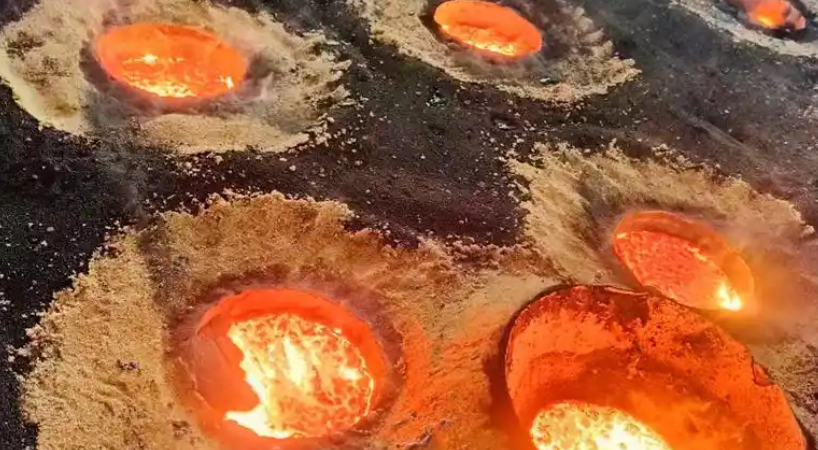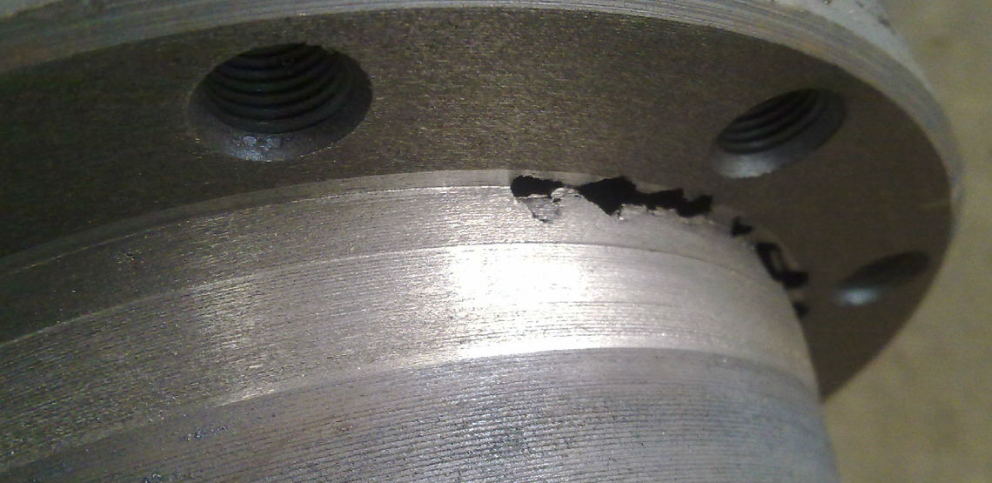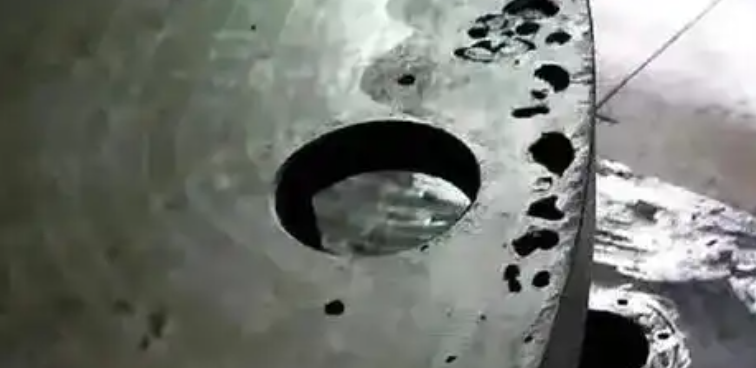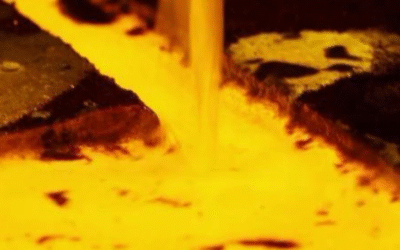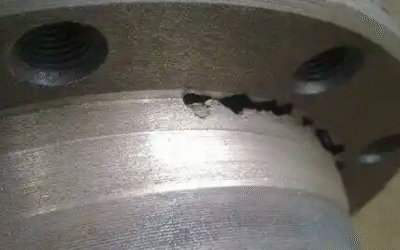Introduction to Metal Casting Defects
Metal casting defects determine the quality and performance of finished cast products. These imperfections can lead to rework, scrap, or failures in service. Based on my experience, hole class defects—porosity and shrinkage—are common. I find them problematic for manufacturers.
Definitions of Shrinkage and Porosity in Metal Casting
I believe understanding shrinkage and porosity is key in metal casting quality control. These two defects look similar. But they come from different causes. And they affect the final product in different ways.
What Is Porosity in Metal Casting?
Porosity means small holes, cavities, or voids inside the cast metal. These can be tiny or visible. All form due to problems during pouring and solidification of the metal. Based on my experience, porosity has two main causes:
Gas porosity: Gases get trapped in the molten metal. The trapped gases create round or spherical holes. These appear as blisters, blowholes, open holes, or clustered pinholes.
Shrinkage porosity: This happens when parts of the metal contract during cooling. But they don’t get enough liquid metal to fill the gaps. This type shows up as odd-shaped cavities with rough walls. You often find them deep inside the casting.
I recommend keeping porosity below 0.05% by volume. Higher levels cause big drops in strength. This matters a lot in automotive or aerospace parts.
What Is Shrinkage in Metal Casting?
Shrinkage means voids form because there’s not enough feeding during solidification and contraction. The metal cools and changes from liquid to solid. It shrinks during this process. If you don’t supply more liquid metal at this stage, empty spaces remain. This is shrinkage.
Shrinkage appears in two forms:
– Macroshrinkage: Large, smooth cavities form in the beginning of solidification. Good feeder design can reduce this.
– Microshrinkage: Smaller, odd-shaped, branching voids form later during cooling. These sit deep inside the casting.
Side-by-Side Summary
| Defect Type | Definition | Typical Form | Main Cause | Detection Methods |
|---|---|---|---|---|
| Porosity | Voids from trapped gas or shrinkage | Rounded, clustered | Gas entrapment, rapid cooling, shrinkage | X-ray, CT, visual, NDT |
| Shrinkage | Voids from volume contraction on solidification | Angular, irregular | Inadequate feeding during cooling | X-ray, NDT, sectioning |
Detecting Porosity and Shrinkage
- Visual inspection: Checks surface porosity and open shrinkage
- X-ray and CT scanning: Finds voids inside
- Ultrasonic testing: Detects shrinkage cavities under the surface
Both shrinkage and porosity can happen together or separately in a casting. I suggest you identify the differences by looking at their sources, appearance, and effects on the material. This knowledge helps you maintain foundry quality control.
Causes of Porosity and Shrinkage in Metal Casting
I believe understanding what causes porosity and shrinkage in metal casting is key. It helps you improve casting quality and cut waste.
Causes of Gas Porosity in Metal Castings
Gas porosity happens when gases get trapped in molten metal during pouring and solidification. Here are the main triggers:
- Rapid cooling of the molten metal. Gases don’t have enough time to escape.
- Poor venting of the mold. This creates air pockets that get trapped in the metal.
- Contamination of the metal or mold materials. This increases the chance of gas forming during casting.
- As the metal fills the mold, gas gets wrapped inside the material. This creates isolated, round or oval pores. You’ll find these most often near the upper regions of castings.
- You can identify this type of porosity by its smooth pore surfaces. These form when liquid fractions are high.
Causes of Shrinkage Porosity in Metal Castings
Shrinkage porosity develops because of volume contraction of metal during solidification. There isn’t enough liquid metal to fill the voids that form.
Causes of Macroshrinkage Porosity (Primary Shrinkage)
Macroshrinkage appears during initial solidification. Here’s what triggers it:
- Not enough feeding. Isolated pools of liquid metal can’t refill areas where shrinkage occurs.
- Small feeder necks. The connection between feeder and casting is too narrow.
- Feeders that are too small or shaped wrong. They can’t deliver extra molten metal well.
- High pouring temperatures. These create larger voids as the metal contracts fast.
These issues create large, smooth-surfaced voids in the casting.
Causes of Microshrinkage Porosity (Secondary Shrinkage)
Microshrinkage forms late in the solidification phase. This is when the flow of liquid metal almost stops. Key causes include:
- Wrong carbon equivalent composition. This makes the metal more prone to shrinkage.
- Not enough inoculation or poor inoculation. This reduces the uniformity and flow of solidifying metal.
- Low strength or poor compaction of the mold material in certain regions. This allows uneven solidification.
- Segregation of alloy elements (like molybdenum or chromium). This causes localized shrinkage.
- The result is irregular, tree-like voids deep inside the casting.
Other Factors Leading to Shrinkage
Based on my experience, several design and process factors can cause shrinkage defects:
- Sudden changes in casting shape. Transitions from thick to thin sections cause local shrinkage zones.
- Sprues that are too small and feeders that aren’t big enough. They fail to keep molten metal flowing to solidifying areas.
- Castings placed too close together in the molding flask. This blocks proper heat escape. It slows cooling and encourages porosity.
- Slow cooling rates. These increase the chance of shrinkage porosity in critical areas of the casting.
I recommend you pay close attention to these factors. They make a real difference in casting quality.
Types and Characteristics of Porosity and Shrinkage in Metal Casting
I recommend understanding porosity and shrinkage types to diagnose and prevent casting defects. Both defects affect final product quality and reliability. They differ in how they form, their shape, and their impact.
Types of Gas Porosity in Casting
- Blisters: Raised surface defects. Gas gets trapped just beneath the surface skin during rapid mold filling.
- Blowholes: Larger, rounded voids found inside castings. Blowholes often measure several millimeters in diameter. You can detect them with advanced tools like X-ray.
- Open Holes: Visible, round voids on the casting surface. These signal poor venting or high turbulence.
- Scars: Shallow, offset holes open to the surface. They suggest interrupted gas release.
- Pinholes: Tiny, grouped cavities below the surface, less than 1 mm. Sudden solidification and trapped gas cause them.
- Sand Blows: Large, irregular gas voids. You’ll find them in the upper regions of a casting.
Characteristic Features:
– Gas-related pores tend to be rounded with smooth interior walls.
– Most common in upper or random areas of the casting.
– Poor mold venting, rapid cooling, or contamination cause them.
Types of Shrinkage Porosity in Casting
- Closed Shrinkage: Internal, invisible cavities. They form at the tops of hot sections inside the casting. Solidification is slowest there.
- Open Shrinkage: Cavities or pipes extend from the part’s surface inward. They can be several centimeters deep on large castings.
- Sponge Shrinkage: Thin, spongy regions. You’ll find them in mid-sections of castings. Distributed contraction creates them.
- Filamentary Shrinkage: Networks of interconnected, crack-like voids. They appear in the thickest sections where feeding is incomplete.
- Dendritic Shrinkage: Narrow, random cavities. They are often unconnected. You’ll see them in dendritic solidification areas.
Characteristic Features:
– Shrinkage structures are angular, jagged, or irregular rather than rounded.
– You’ll find them in thick casting zones, hot spots, or massive interiors.
– They look different from gas porosity due to rough, angular surfaces.
Real-World Example
Automotive engine block:
Gas porosity appears as visible blisters or blowholes near upper casting surfaces. Trapped air during fast metal pouring causes them.
Shrinkage porosity forms deep within thick cylinder walls. You’ll find it during X-ray or ultrasonic testing. Poor feeding or hot spot control points to this issue.
Table: Porosity and Shrinkage Types & Characteristics
| Porosity Type | Shape | Cause | Typical Location | Impact |
|---|---|---|---|---|
| Gas (Blowholes) | Rounded | Entrapped gases in molten metal | Surface/Interior, random | Weakened structure |
| Gas (Pin holes) | Tiny, round | Gas entrapment, rapid cooling | Subsurface, grouped | Potential for leak paths |
| Shrinkage (Closed) | Angular | Lack of feeding during solidification | Inner hot spots, thick zones | Reduced strength, cracking |
| Shrinkage (Open) | Angular/pipe | Severe feeding deficiency | Surface-connected | Visible defect, aesthetics |
| Sponge Shrinkage | Thin | Distributed contraction | Mid-sections | Weakens structure |
| Filamentary Shrink. | Network | Incomplete feeding in thick parts | Thick sections | Network of cracks |
| Dendritic Shrinkage | Random | Solidification in dendritic area | Thick sections | Unconnected fractures |
Effects on Casting Quality
Shrinkage and porosity are basic metal casting defects. They impact casting quality in major ways. They affect mechanical performance, reliability, and how finished parts look.
Impact of Shrinkage Porosity on Casting Quality
Creates angular cavities deep inside thick or hot areas of castings. This happens where solidification is slow. Liquid metal can’t reach and feed the areas that are contracting.
This results in:
- Lower structural strength. The part becomes more vulnerable to cracking under mechanical or thermal stress.
- Weaker core areas. These can fail during high loads or repeated use. I’ve seen this in automotive and aerospace parts.
- Surface and internal flaws like sink marks and depressions. These make machining and finishing harder. They can also speed up corrosion.
Case Example:
Automotive transmission housings offer a clear example. Shrinkage porosity in thick sections can cause serious failures. Vibration or cyclic loading triggers these failures.
Impact of Porosity on Casting Quality
Forms as round, smooth-walled cavities near surfaces. Gas gets trapped (hydrogen in light alloys is common). Poor venting also causes this.
This leads to:
- Lower fatigue strength and leak paths form. This is a big problem for pressure-tight parts. Valves and pipe fittings are examples.
- Surface collapse or defects show up during machining. Both appearance and fit suffer.
- Poor quality perception. Even small visible pores reduce customer confidence. I recommend addressing this issue before final inspection.
Case Example:
Hydraulic valve bodies face this issue often. Gas porosity causes fluid leakage. Vacuum impregnation or repairs become necessary. These are expensive.
For consumer goods, surface porosity creates problems. Paint doesn’t stick well. The finish looks less attractive.
Porosity and shrinkage defects lower casting yield. They increase scrap rates. Rework and inspection costs go up. Warranty burdens become significant.
Even small casting defects can cause major quality problems. They create reliability issues in demanding sectors. High-stakes industries face the biggest risks. I believe prevention is the best strategy here.
Prevention Methods for Shrinkage and Porosity in Metal Casting
I recommend preventing shrinkage and porosity defects through process optimization, temperature control, and advanced post-processing. These methods preserve product quality. They reduce waste. They also minimize expensive repairs.
Optimized Casting and Mold Design
- Uniform Wall Thickness: Avoid drastic changes in section thickness. Keep wall thickness consistent. This reduces the risk of localized shrinkage porosity.
- Decrease Thermal Joints: Design castings with fewer heavy thermal joint connections, at fillets. Use hollow or cored regions where you can. This dissipates heat. It reduces hot spots.
- Inner Gate Optimization: Increase the cross-sectional area of gates. Select gate locations with care, for thicker-walled parts. This ensures steady pressure. It provides good feeding. It creates fewer shrinkage pores.
Molten Metal and Mold Temperature Management
Temperature Control: Control the temperature of both the molten metal and the mold. In aluminum Die casting, I suggest lowering melt and mold temperatures. This decreases shrinkage defects. Target cooling of thick sections with dedicated channels. This helps balance solidification rates.
Process Parameter Adjustments
Working Pressure Adjustments: Increase injection or working pressure to compact metal. This minimizes shrinkage. You can achieve this by altering plunger diameters. Or adjust hydraulic settings. Always stay within safe operating limits.
Modify Mold and Feeding Channel: Design runners and feeding channels to remain molten longer. Metal can then feed shrinking regions, near gates.
Cooling System Improvements
Cooling System Enhancement: Add or optimize mold cooling in hot spots. Uniform cooling across the mold is essential. This avoids areas that solidify last. It prevents trapped voids.
Post-Casting Sealing and Technological Upgrades
Vacuum Impregnation: After casting, I recommend vacuum impregnation. It offers a reliable and cost-effective way to seal internal porosity. The process removes air from pores. It fills them with a thermal-cured sealant. It preserves the mechanical properties of the casting.
Vacuum-Assisted Casting: Using a vacuum during casting reduces gas entrapment. It limits formation of porosity. It enhances overall part integrity.
Material Quality and Handling
High-Quality Material and Refining Agents: I always use clean, dry charge materials. Avoid volatile mold coatings. Avoid contaminants. These can release gases. They introduce porosity.
Process Planning and Simulation
Simulation Software Use: Use casting simulation software to model gating, cooling, and feeding. These tools predict high-risk porosity and shrinkage areas before production begins. This enables proactive design changes.
Best Practice: Assess casting design and cooling strategies in depth before manufacturing. Use simulation results for continuous improvement. Based on my experience, this saves time and money.
Controlled Cooling Procedures
Controlled Cooling: Slow, well-managed cooling lets molten metal feed contracting regions during solidification. This minimizes the risk of internal shrinkage voids.
Process Case Studies
- Directional Solidification: Using rigged chills and controlled heat flow feeds liquid from hot to cold zones. This eliminates isolated shrinkage cavities.
- Runner and Ingate Modification: For large castings, resize runners, sprues, and ingates. This ensures heavy regions receive good feeding. It reduces shrinkage near thick sections.
- Vacuum Impregnation Applications: Aluminum and magnesium die casts often depend on vacuum impregnation. It seals internal pores. It ensures leak-tight performance in critical functions.
Key Differences Summary
Shrinkage and porosity are two common metal casting defects. They come from different causes and create distinct problems in finished parts.
Main Differences Between Shrinkage and Porosity in Metal Casting
Origin and Formation
Shrinkage happens when metal volume reduces during cooling and solidification. The severity varies by alloy: cast iron (0.9%–1.3%), cast steel (1.8%–2.2%), and cast aluminum (1.2%–1.6%).
Porosity forms from small voids or air pockets. These come from trapped gases, poor mold venting, core reaction, or lack of metal feeding during solidification.
Shape and Location
Shrinkage porosity develops in the central part of castings and at “hot spots.” Voids are irregular or jagged. For alloys like AlMg9 and Mn-steel, large open holes can appear in the center or riser sections. This happens more where solidification is slow.
Porosity from gas entrapment shows as spherical or elongated pores. These distribute across the casting. You find them in interdendritic spaces or closer to the surface.
Influence of Alloy and Process
AlMg9 and AlCu4Ti alloys face more shrinkage porosity than AlSi7Mg. Squeeze casting with high pressure (up to 90 MPa) can halve porosity compared to gravity die casting. This reduces average pore volume to 1.0–1.5%. Shrinkage porosity can be up to three times lower in optimized squeeze castings than traditional methods.
Impact of Pressure and Feeding
High-pressure casting and well-designed feeding systems (risers, controlled cooling) are crucial for minimizing shrinkage and related voids. I recommend this approach for fast-shrinking alloys like cast steel. Pressure application also compacts metal. This reduces both shrinkage and gas-related porosity. It enhances casting density and strength.
Production Defect Impacts
Shrinkage defects cause dimensional errors, warping, and large central holes. These appear at the last-to-solidify regions.
Porosity defects weaken mechanical strength and part tightness. They can create leak paths. Porosity tolerance depends on the component and its function.
Shrinkage vs Porosity: At-a-Glance Comparison
| Property | Shrinkage | Porosity |
|---|---|---|
| Origin | Volume loss during cooling/solidifying | Trapped gas, unfilled shrinkage areas |
| Most Common Location | Central zones, hot spots | Interdendritic spaces, near surfaces |
| Affected Alloys | Iron, Steel, Aluminum | Dependent on process/alloy |
| Measurement | Linear shrinkage (0.9–2.2%) | Volume percentage (1.0–1.5%) |
| Prevention | Pressure, risers, cooling control | Degassing, venting, pressure, feeding |
| Defect Results | Dimensional errors, large cavities | Reduced strength, leaking, porosity |
Based on my experience, applying greater pressure and optimizing feeding pathways reduces both shrinkage and porosity. This improves the mechanical performance and reliability of finished castings.
Industry Best Practices for Controlling Shrinkage and Porosity
Controlling shrinkage and porosity in metal casting requires advanced tech, clear standards, and smart design. I recommend these proven methods that top foundries use to reduce casting defects.
Advanced Defect Prevention Techniques
Vacuum Impregnation
This technique seals internal pores in castings. Many foundries use it because it works well. The method keeps the part’s size and fit unchanged. A vacuum pulls sealant into tiny pores. This stops leaks. I suggest this process for parts that need high integrity. It saves money and lasts long.
High-Quality Material and Coating Selection
Use premium base metals and mold coatings. Choose materials that don’t release too much gas or moisture when you pour. This controls gas porosity. Aluminum alloys absorb hydrogen easily. Based on my experience, quality materials make a big difference here.
Optimized Mold, Gating, and Riser Design
Design gating and riser systems for smooth metal flow. Good feeding is key. Use chills, ribs, and cooling coils to pull heat from hot zones. Keep overflow areas under 60% of the inner gate’s area. Avoid sharp corners and thick sections. These cause shrinkage. I like this approach because it tackles the root cause.
Alloy and Chemistry Optimization
Pick alloys that resist shrinkage naturally. Add elements like graphite or manganese to improve the casting’s internal structure. Match your choice to what the part needs. This method works well for different alloy systems.
Conclusion: Key Takeaways on Shrinkage vs. Porosity in Metal Casting
You need to understand the differences between shrinkage and porosity. This knowledge helps you produce high-quality castings. It also keeps your foundry operations efficient.
Major Distinctions and Defect Characteristics
Shrinkage happens when metal contracts as it cools and solidifies. This process creates cavities. These cavities often have angular or dendritic shapes. They form at hot spots or regions that solidify last.
- Macroshrinkage: You’ll see large, smooth cavities. These form in the beginning stages of solidification.
- Microshrinkage: You’ll find smaller, branched (dendritic) voids. These hide deep inside the part.
I’ll give you an example. Cast steel shows higher shrinkage rates (1.8%–2.2%). This means you must design careful riser and feeder systems. Cast iron sees less shrinkage. This is because graphite expansion helps offset the contraction.
Porosity means small, round, or oval holes. Two things cause them:
- Gas entrapment: Gases get trapped in molten metal. They form rounded pores. These pores can appear anywhere in the casting.
- Shrinkage-related porosity: Poor feeding during solidification creates porous zones.
Impact on Casting Quality
Both defects reduce the mechanical strength of metal castings. They also hurt reliability. Shrinkage porosity damages the structural integrity in critical zones. This leads to safety concerns. Performance suffers in applications like automotive components and hydraulic parts. Gas porosity causes leaks. It reduces fatigue strength. It creates cosmetic flaws. All of this affects function and market acceptance.
Best Practices for Prevention
- Riser and Feeder Optimization: Proper feeding paths prevent shrinkage porosity. Focus on thick or hot zones.
- Improved Mold Venting: This reduces the risk of gas entrapment. It limits gas porosity formation.
- Simulation Tools: These tools predict defect-prone areas. Engineers can optimize gating and cooling before production starts.
- Process Adjustments: Lower melt and mold temperatures. Enhance cooling channels. Use vacuum-assisted casting. These steps reduce both defects.
- Quality Standards Compliance: Follow MSS SP-55 or ASTM A802. These standards provide clear porosity and shrinkage limits. They ensure safety and function.
Closing Evaluation
Based on my experience and industry data, you must control both shrinkage and porosity. This is vital for durable, cost-effective castings. I suggest proactive defect management. Use better design, technology, and rigorous inspection. This delivers strong reliability. It cuts waste, repair costs, and warranty risks. For high-value or safety-critical applications, I recommend investing in simulation. Improve your processes. Follow industry standards. This is the best practice you can adopt.

